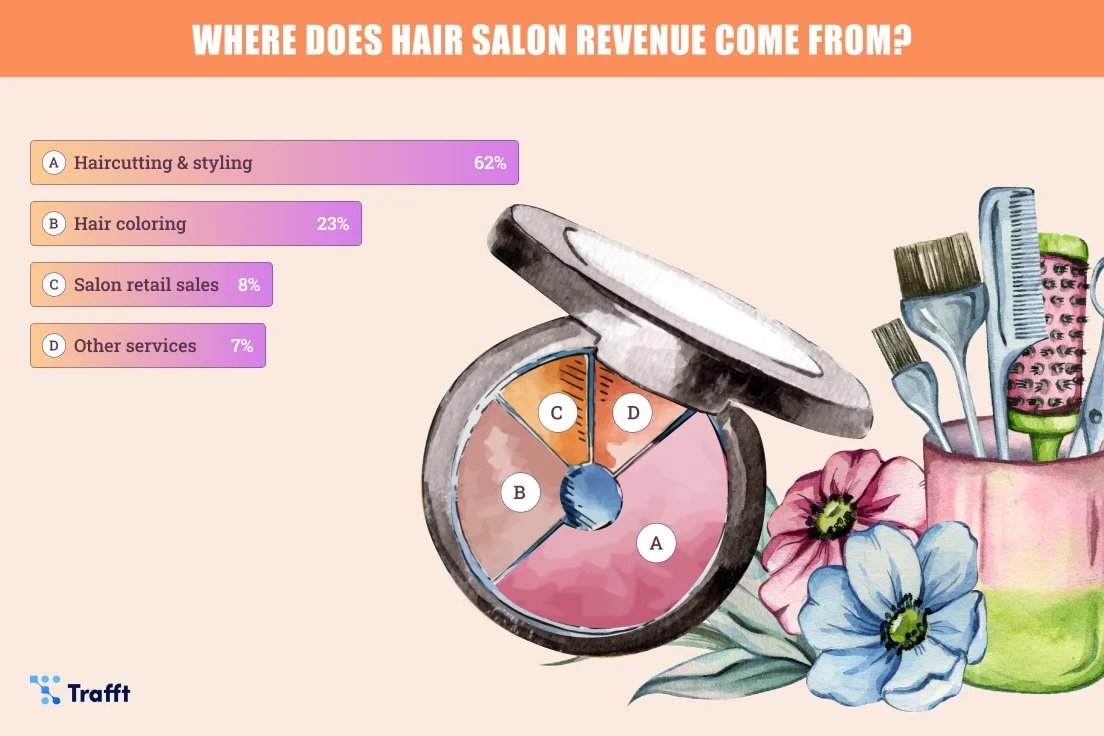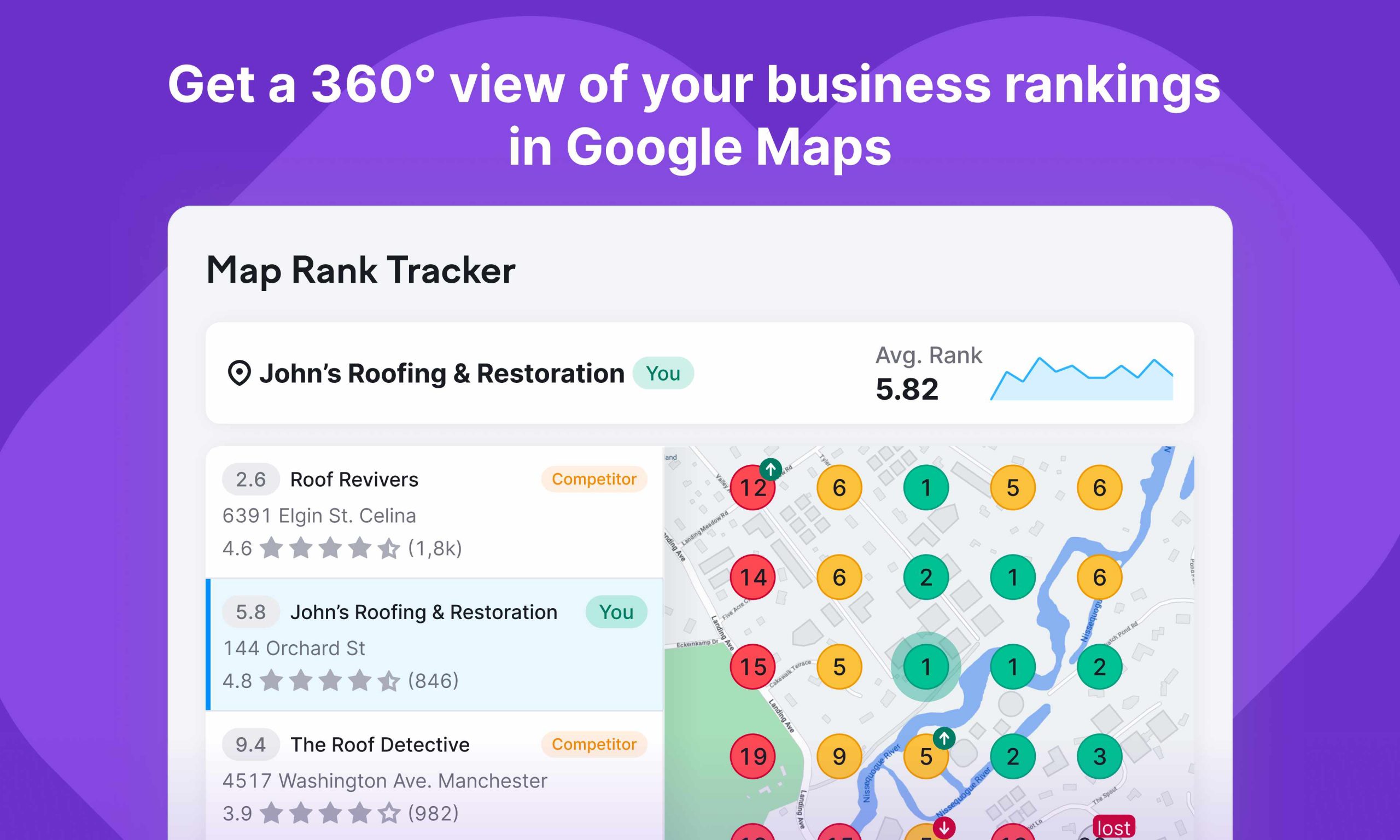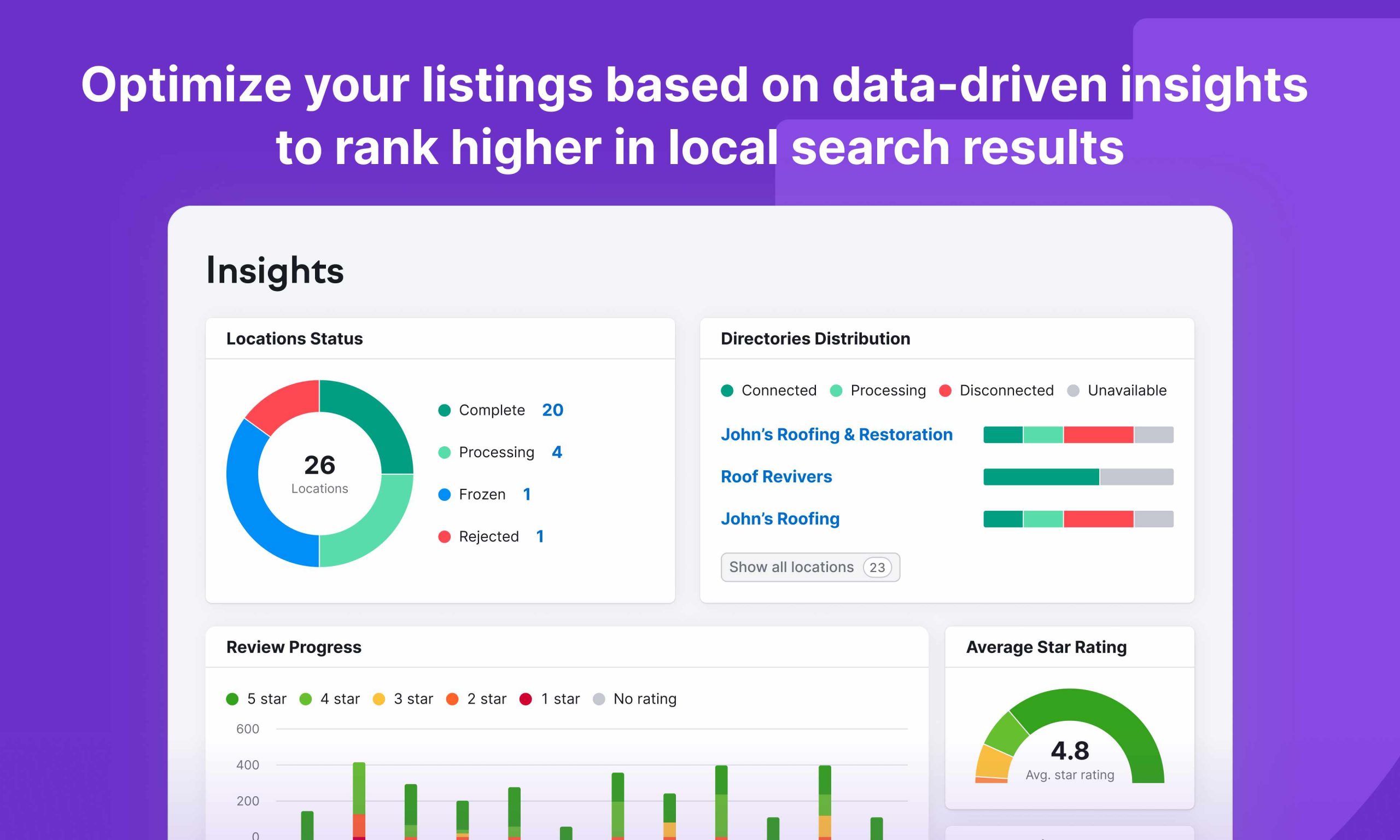Despite global economic headwinds, entrepreneurship worldwide continues to thrive. Local businesses operate within a unique ecosystem, where community ties and digital presence converge. In today’s market, a strong social media strategy is not just an advantage; it’s a necessity for survival and growth. Moreover, in an environment of economic uncertainty, labor market upheaval, and technological disruption, the challenges for small businesses are increasing. The good news is that numerous business opportunities exist, but success depends on having the right digital tools beyond building a standard website. This article explores five effective social media strategies tailored for local businesses, emphasizing the importance of entrepreneurship, the competitive landscape, and the digital tools available to thrive. We also examine the specific challenges and opportunities within popular small business sectors. We’ll highlight how leading online visibility management players like Semrush empower local businesses to succeed with their local business SEO tools. Navigating the digital world effectively is crucial for local entrepreneurs seeking to reduce survival risk and build a sustainable and thriving enterprise. Be sure to follow us on LinkedIn or reach out to the ClearSky 2100 Ventures team with any questions. Now let’s jump into it.
At least 97% of consumers look for a local business on the Internet.
Entrepreneurship and the Local Business Landscape
Entrepreneurship is the lifeblood of local economies, driving innovation and creating opportunities. Worldwide, there are an estimated 600 million entrepreneurs. However, entrepreneurship’s importance and value extend beyond individual success. It fosters a vibrant community, generating employment and providing unique products and services.
The range of business ideas for local entrepreneurs worldwide is incredibly diverse, from traditional brick-and-mortar stores to innovative service providers and niche markets. Business startup activities differ by region. For example, countries such as Croatia, Spain, Israel, Norway, and Switzerland have seen strong activity in the Business Services sectors. Business services include activities like information technology or business services. Conversely, developing markets such as India, Morocco, and South Africa have witnessed robust startup activities in the Consumer Services sector. Consumer services include activities such as retailing, hotels and restaurants, personal services, etc. Nevertheless, millions of entrepreneurs worldwide initiate and pursue their businesses every year.
While specific figures may vary depending on the source and methodology used, it’s evident that the entrepreneurial spirit is thriving globally. However, the small business landscape remains highly competitive.
The Growth of Franchising
Franchising has emerged as a significant growth model for local businesses seeking to expand their reach while minimizing risk. In the United States, an estimated 831,000 franchisees employ 8.8 million people and contribute nearly $1 trillion of economic output. Additionally, there are about 4 million franchisees worldwide. Franchising allows entrepreneurs the opportunity to replicate a successful business model in new locations, leveraging the franchisor’s brand, operational systems, and support network. For local businesses with a proven track record, franchising can effectively scale operations, increase market share, and achieve rapid growth.
The appeal of franchising lies in its ability to combine the entrepreneurial drive of individual business owners with the resources and expertise of an established company. This symbiotic relationship fosters a unique environment where franchisors and franchisees can thrive.

Key aspects of franchising include:
- Brand Recognition and Trust: Franchises often benefit from established brand recognition, which can attract customers and build trust in new markets.
- Proven Business Model: Franchisees operate under a well-defined business model, reducing the risk of failure and providing a roadmap for success.
- Support and Training: Franchisors typically provide training, ongoing support, and marketing assistance to help franchisees launch and grow their businesses.
- Scalability: Franchising allows businesses to expand rapidly without needing significant capital investment, as the financial burden is shared with franchisees.
However, franchising also presents challenges, such as maintaining brand consistency, ensuring quality control across multiple locations, and managing franchisor relationships. Effective communication, standardized procedures, and robust quality assurance programs are crucial for mitigating these challenges and ensuring the long-term success of the franchise network.
Moreover, the franchising model is evolving with the rise of digital technologies. Online platforms, social media, and data analytics are increasingly important in how franchises operate, market their services, and engage with customers. As such, these tools should be a core element within the tech stack of the franchisee and franchisor.
In the United States, an estimated 831,000 franchisees employ 8.8 million people and contribute nearly $1 trillion of economic output.
Small Business Survival Rates
The reality is harsh: many small businesses struggle to survive due to limited resources, intense competition, and rapidly changing consumer preferences. For example, U.S. Bureau of Labor Statistics data indicates that approximately 20% of new businesses fail within the first year, and nearly half (around 50%) close within five years. Additionally, by the 10th year, over 65% of businesses will have failed. This means that if 100 new local businesses open this year, only about 50 will still operate five years later.
When a small business fails, the consequences can be significant. Owners may face substantial financial losses, including personal investments and accumulated debt. Additionally, job losses occur, leading to increased unemployment rates within the community. Ultimately, local economies suffer as the diversity of products and services decreases, and the sense of community and vibrancy can be diminished. In some cases, the physical closure of a business can also lead to vacant storefronts, creating blight and negatively impacting surrounding businesses.
However, a strategic social media presence offers a powerful solution to reduce the risk of business failure. Effective strategies enable businesses to directly engage customers, cultivate brand loyalty, expand their local reach, and ultimately, improve their chances of success.
Small Business Challenges and Opportunities
Each local business sector faces unique hurdles and possesses distinct advantages in the digital landscape. Understanding these nuances is crucial for tailoring effective social media strategies. According to the NAICS, there are 20 business sectors and over 1,000 industry groups. Local businesses can be found in nearly each one of the major sectors.
Sector-Specific Challenges for Small Businesses
Auto Repair
The United States has over 230,000 vehicle repair and maintenance facilities. Approximately 75% are independently owned. Moreover, consumers prefer to patronize independently owned shops primarily due to pricing. This sector faces the challenge of building trust and credibility with customers unfamiliar with car mechanics. Social media can provide educational content, share customer testimonials, and offer transparent information about services and pricing. Opportunities include offering online appointment booking, showcasing expertise through videos and tutorials, and engaging with local car enthusiasts.

Cafe and Coffee Shops
This sector is highly competitive, with numerous options available to consumers. In particular, first-year challenges are significant, with up to 30% closing within the first year. Social media can be used to create a unique brand identity, showcase the cafe’s ambiance and offerings, and promote special events and promotions. However, challenges include maintaining consistency in content creation, managing online reviews, and standing out from the crowd. Opportunities include leveraging visually appealing content, partnering with local artists or musicians, and creating a loyal customer base through social media engagement.
Beauty Salons
This sector consists mainly of solopreneurs and relies heavily on visual appeal and customer satisfaction. The largest demographic for salons is customers between the ages of 35 and 44. Social media platforms like Instagram, Facebook, and TikTok are ideal for showcasing before-and-after transformations, sharing client testimonials, and promoting new services and trends.
Challenges include managing client expectations, addressing negative reviews, and keeping up with the latest trends. Opportunities include offering online booking, running targeted ads to reach specific demographics, and leveraging user-generated content by encouraging clients to share their experiences.
HVAC Services
Activities in this sector often involve urgent and unexpected needs, making trust and reliability crucial. The industry is expected to grow to $35.8 billion by 2030 versus $25.6 billion in 2019. Southern states hold the largest market share and are expected to register the largest growth. Social media can be used to provide valuable information about services, offer seasonal maintenance tips, and share customer testimonials to build credibility.
Challenges include addressing urgent service requests through social media, managing online reputation, and competing with larger companies. Opportunities include offering online scheduling, running targeted ads to reach homeowners in specific areas, and providing 24/7 customer support through social media.
Home Health Care Services
The home healthcare sector, which provides care to individuals in their homes, including seniors, those with disabilities, and those recovering from illness or surgery, faces unique challenges and opportunities in the social media landscape. The market was valued at $142.9 billion in 2022 and is expected to post a 7.8% CAGR between 2023 and 2030. The aging of the US population creates numerous business opportunities to service this growing population. Some of the businesses include caregiving, transportation services, and home improvement.
Building trust and credibility is paramount, requiring these businesses to convey professionalism, reliability, and compassion in their online presence. Moreover, the majority of these businesses are hyperlocal. Service providers must also navigate the complexities of protecting patient privacy and complying with healthcare regulations.
Effectively targeting diverse audiences, including patients, family members, and healthcare professionals, with accurate and informative content is essential. Social media can be leveraged to educate the community about services, share patient testimonials (with consent), recruit caregivers, and build relationships with referral sources.
93.2% of consumers generally won’t travel longer than 20 minutes to make everyday purchases, and 87% won’t even travel longer than 15 minutes.
5 Effective Social Media Strategies for Local Businesses
1. Hyperlocal Content and Community Engagement
Local businesses thrive by building strong relationships within their communities. This strategy emphasizes creating content that resonates with the specific interests, needs, and values of the local audience. Share news about local events, partner with other local businesses, and highlight unique aspects of your city or town.
Encourage interaction by asking questions, running polls, and hosting online discussions related to local topics. This approach fosters a sense of belonging and positions your business and brand as an active and engaged member of the community. A local bookstore, for example, could promote readings by local authors or share reviews of books set in the area.
2. Consistent and Responsive Customer Interaction
Social media provides a direct line of communication between businesses and their customers. This strategy focuses on maintaining a consistent presence and responding promptly to inquiries, comments, and reviews. Provide exceptional customer service through social media channels, addressing concerns, resolving issues, and demonstrating a commitment to customer satisfaction.
Solicit feedback and use it to improve your products, services, and overall customer experience. This approach builds trust, strengthens customer loyalty, and enhances your business’s reputation. A local restaurant, for instance, should actively respond to both positive and negative reviews, showing that they value customer feedback.

3. Visual Storytelling and Authentic Branding
In today’s visually driven world, compelling images and videos are essential for capturing attention and conveying your brand’s personality. This strategy emphasizes creating high-quality visual content that showcases your products, services, and the people behind your business. Share behind-the-scenes glimpses, highlight customer testimonials, and create engaging videos that tell your brand’s story.
Use platforms like Instagram and Facebook to share visually appealing content that resonates with your target audience. Authenticity is key; let your brand’s unique character shine through in your visual storytelling. For example, a local bakery could share photos and videos of their baking process, showcasing the craftsmanship and passion of their products.
4. Local SEO Optimization and Targeted Advertising
Optimizing your social media presence for local search and utilizing targeted advertising is crucial to reaching local customers effectively. This strategy involves incorporating relevant keywords and location-specific information into your social media profiles and posts. Claim and optimize your Google Business Profile to ensure consistency across all online platforms.
Utilize social media advertising platforms to target specific demographics and interests within your local area. Run campaigns to promote special offers, events, and seasonal promotions. This approach ensures potential customers can easily find your business when searching for local products or services. A local plumber, for example, should use location-based keywords in their social media profiles and run targeted ads to reach homeowners in their service area.
5. Leveraging User-Generated Content and Influencer Marketing
Customers are more likely to trust their peer’s recommendations compared to businesses themselves. This strategy encourages customers to share their experiences with your brand through user-generated content (UGC). Run contests, offer incentives, and create opportunities for customers to share photos, videos, and testimonials—partner with local influencers who have a strong following and align with your brand’s values. Influencers can help you reach a wider audience, build credibility, and generate buzz around your business. A local boutique, for instance, could partner with local fashion bloggers to showcase their clothing and accessories.
Semrush: A Powerful Tool for Local Business Success
Online visibility management companies like Semrush can be invaluable for local businesses looking to strengthen their online presence and attract more customers. Semrush offers a suite of tools that can help you with keyword research, competitor analysis, content ideation, SEO optimization, and performance tracking. By leveraging these tools, you can create more effective content that ranks higher in search results, attracts more traffic, and generates more leads.
Maximizing Customer Reach with Semrush Local
At least 97% of consumers look for a local business on the Internet. Semrush Local, the local business SEO tools within Semrush enable businesses to optimize their Google Business Profile across various online directories, ensuring consistency and accuracy of information such as name, address, and phone number (NAP). This is crucial for improving local search rankings and ensuring that potential customers can easily find accurate information about the business. Semrush Local offers a robust suite of tools to support local businesses. The Semrush Local product is available in two tiers. These include:
Local Advanced
- GBP Optimization
- Listing Management
- AI Review Management
- Map Rank Tracker
- Competitive Insights
Local Ultimate
The Semrush Local Ultimate includes all the features in the Local Advanced plus
The Review Management tool allows local businesses to monitor customer reviews across different platforms. Businesses to track their online reputation and respond promptly to feedback. Positive reviews can significantly boost a business’s local search ranking and attract new customers, while negative reviews provide an opportunity to address concerns and improve customer service. It’s estimated that 50% of customers trust online reviews as much as personal recommendations whether purchasing a product or service. Additionally, businesses can set up AI-scheduled posts, and AI auto-reply to users or customers
In addition to its local SEO tools, Semrush also offers a range of other features that can benefit local businesses. For example, Semrush’s keyword research tool can help you identify relevant keywords that your target audience is searching for, allowing you to create content that addresses their specific needs and interests. Its competitive analysis tool can help you see what your competitors are doing in terms of content marketing, allowing you to identify opportunities to differentiate yourself and stand out from the crowd.
The social media tracker allows businesses to monitor their social media performance, track engagement metrics, and analyze competitor activity. This information can help businesses fine-tune their social media strategies, identify trends, and improve their online presence on social media platforms. Additionally, Semrush’s link-building tools help businesses build a strong backlink profile, which is an important factor in improving website authority and search engine rankings.
Think Global Act Local
Semrush is one of the world’s largest online visibility management companies, offering robust and extensive data relevant to SEO and other online activities. For example, its keyword database now exceeds 26.5 billion, the largest keyword database in the market. Additionally, its backlink database now exceeds 43 trillion, with the fastest crawler crawling over 10 billion backlinks daily. With its Semrush Local bundle, the company offers businesses the ability to execute targeted and relevant marketing strategies for any business.
For small businesses understanding the differences between local SEO versus national SEO versus global SEO strategies is essential to building a successful marketing campaign.
Semrush Local listing management tool is available in select markets in the following regions:
- North America
- South America
- Oceania
- Europe
- Asia
- Africa
- MENA
Given the competitive nature of local businesses, having an effective digital marketing strategy is key to growth and success. Semrush empowers local businesses to take control of their online presence, attract more customers, and achieve their growth objectives. By providing valuable data, insights, and tools, Semrush helps local businesses make informed decisions, optimize their marketing efforts, and compete effectively in the digital marketplace.
The Digital Edge: Social Media’s Role in Local Business Success
Global entrepreneurship will continue to thrive for the foreseeable future. Additionally, AI as well as rapidly shifting socioeconomic and consumer trends continue to reshape the global business landscape. As such local businesses stand at a pivotal point, where the fusion of traditional community engagement and cutting-edge digital strategies defines their trajectory. Social media is critical in how these businesses connect with their customer base, build lasting relationships, and foster sustainable growth. In cities and business districts worldwide, competition among local businesses remains fierce, and business survival is challenging. For small businesses understanding the strategic differences between local SEO versus national SEO versus global SEO is essential to building a successful marketing campaign.
By prioritizing hyperlocal content, delivering exceptional customer service online, and leveraging visual storytelling, businesses can carve out a unique space for themselves in the digital landscape. Furthermore, tools like Semrush Local provide invaluable support, empowering businesses to optimize their online presence, track performance, and stay ahead of the competition. The path to success for local businesses in today’s interconnected world lies in their ability to harness the power of social media, adapt to the ever-evolving digital environment, and remain true to the authentic values that define them.












